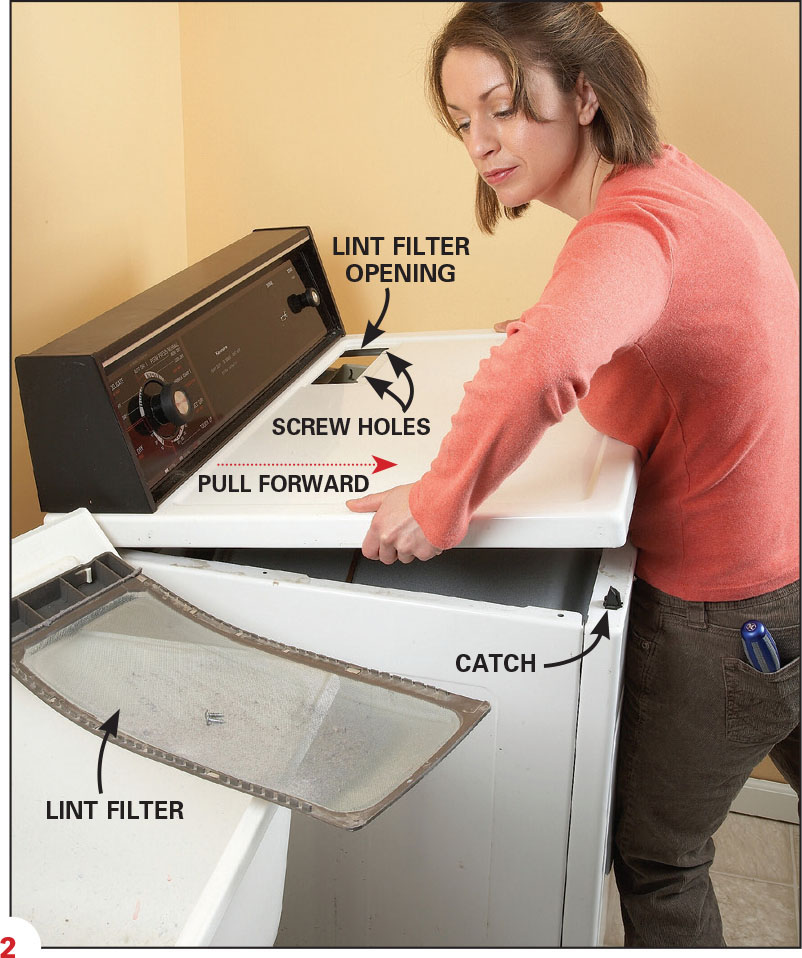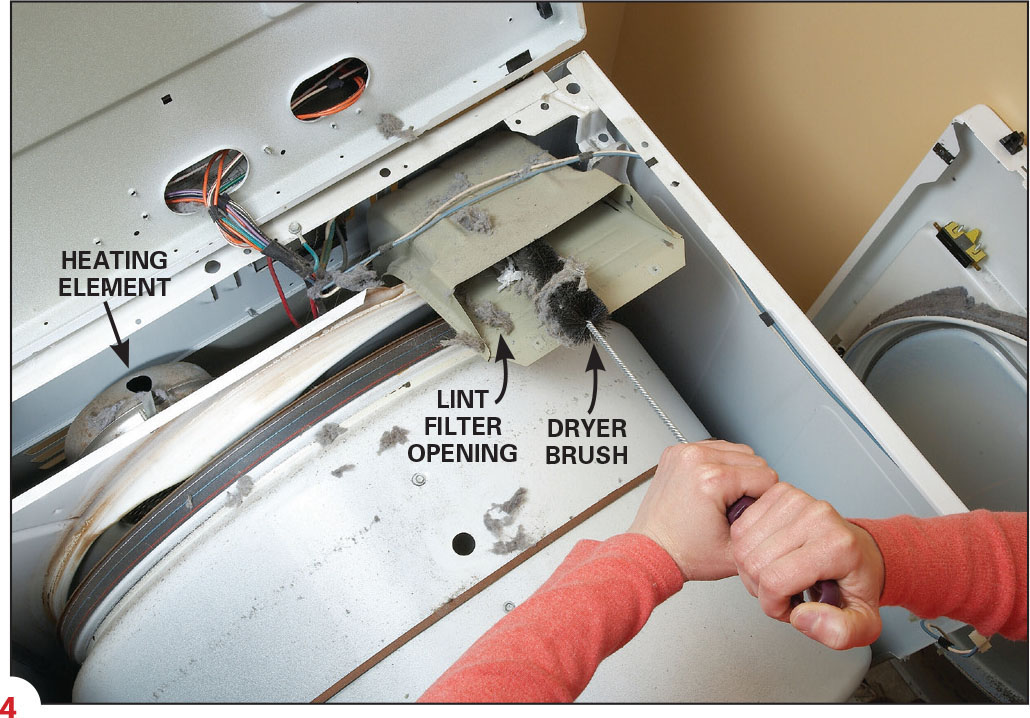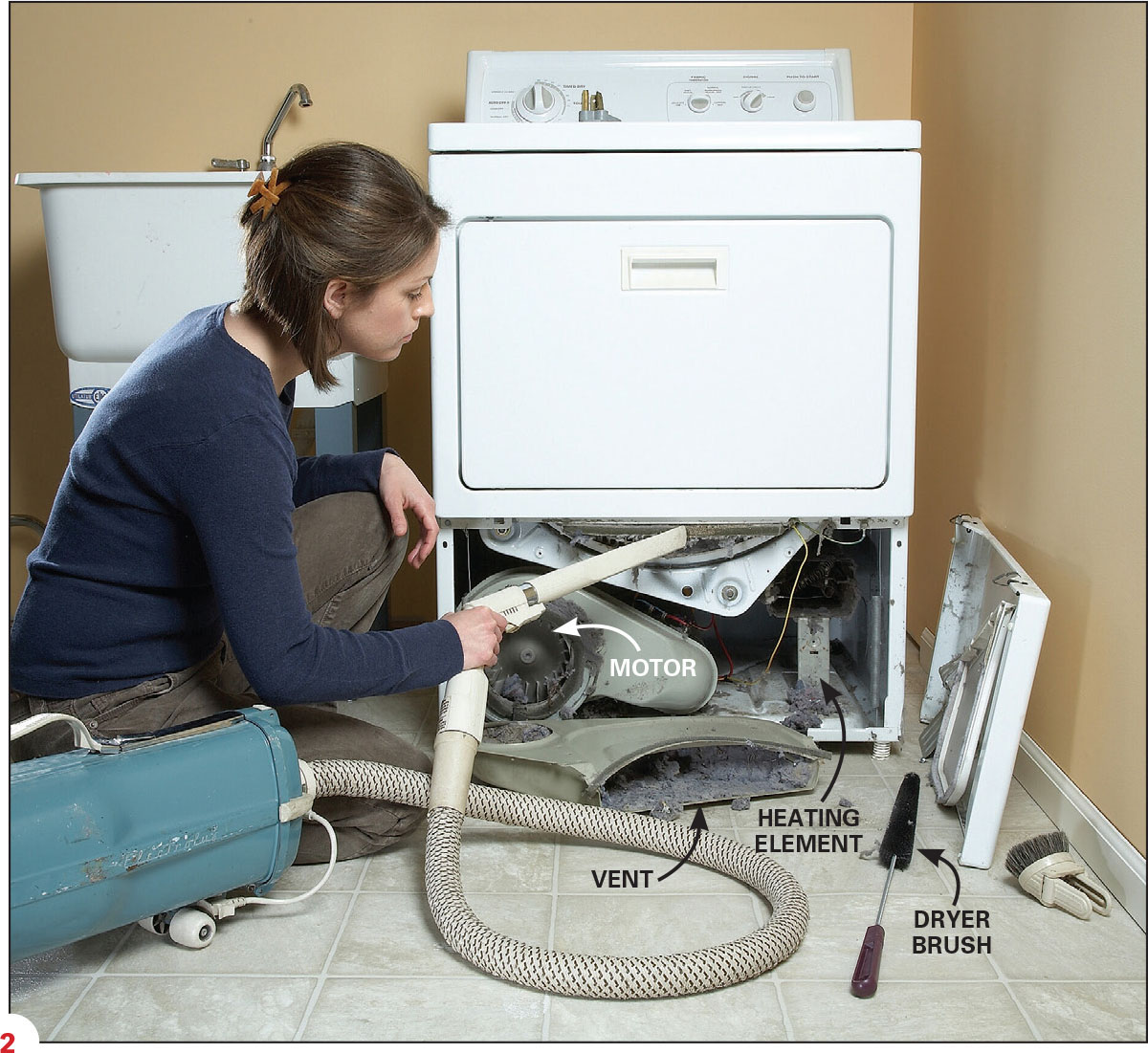
Prevent house fires. Clean the lint from inside your clothes dryer as well as lint caught in the exhaust vent. You can complete the cleaning in about 30 minutes.

1. To clean the exhaust duct, shut off the gas and unplug the dryer, then pull the dryer away from the wall and disconnect the duct from the dryer. Use a brush and a vacuum to remove the lint in the duct. If you have a flexible duct (especially the plastic type!), replace it with rigid metal duct.

2. To clean inside the dryer, unplug it and turn off the gas, then open either the top or the front. (The procedure is the same for gas and electric dryers.) For dryers with a top lint filter and a solid front panel, remove the lint filter and take out the two screws on the side of the filter opening and lift it up to release it from the catches at the corners.

3. Disconnect the door-switch wires in the front corner, remove the two front screws then tip the front forward and lift it clear of the bottom catches and the drum. The drum will tip as the panel drops, but this won’t damage anything. Just hold it up while you clean.

4. Brush out the lint inside the lint filter opening and vacuum all around the drum. Clean thoroughly around the heating element, but work gently around wires and mechanical parts. Use a long brush to clean the vent, then vacuum it from the top and back
5. Finally, reassemble the dryer. Put the front into the drum and lift, then drop the front into the catches near the bottom while holding it tight against the sides. Reattach the front screws and wires, then set the top back down.

1. Release the metal catches (or remove screws).
Slide a screwdriver into the gap at the top of the bottom panel at the two catches to release the panel.

2. Vacuum out the lint. Vacuum around motor, the vent and the inside of the dryer. Clean carefully around wires and small parts to avoid breaking them.